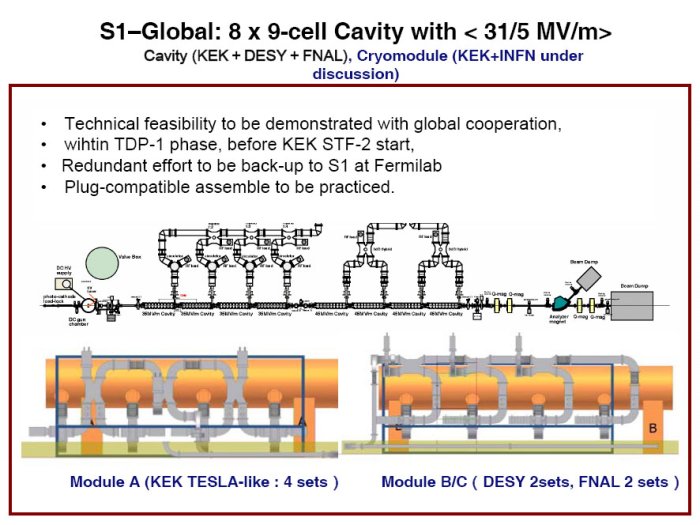Director's Corner
15 May 2008
 Barry Barish |
Globalising R&D
The coordination of superconducting radiofrequency R&D is central to the Global Design Effort's mission of bringing the design for the ILC to the point we can make a robust proposal to our governments. Our efforts are becoming globalised more rapidly than we had envisioned. To achieve our goals and main milestones, we must be focused, eliminate duplication and work together. The latest important move towards globalisation is what we are calling "S1-Global," a planned cavity-string performance test as a global effort, using the superconducting radio frequency (SCRF) test facility at KEK called STF. S1-Global was a major subject of discussion at the recent week-long ILC meeting on SCRF R&D and the basic approach has been agreed to.
The S1 programme is the first stage of our plan to test fully loaded cryomodules. A set of eight dressed cavities qualified through the high gradient effort will be installed into a cryomodule and tested. S1-Global happens in addition to tests that will proceed at individual laboratories that use their own produced cavities. This high priority programme will realise the cavity-string performance test as a global effort. It will use the STF test facility at KEK during Technical Design Phase R&D efforts, TDP-1, which will last until 2010. Two cavities each will be provided by America and Europe and four cavities will be provided by Asia.
S1-Global will also provide a first real-life test of the plug-compatible approach for cavity and cryomodule components. Through this process, individual or institutional designers and developers provide "plug-compatible" components for an ILC cryomodule. The cryomodule will be subsequently connected to an appropriate RF power distribution and cryogenic system. The goal of the first stage of this programme is to demonstrate an operational field gradient of 31.5 MV/m as a demonstration of the technological feasibility of the ILC SCRF technology.
The week-long ILC SCRF meeting at Fermilab covered the broad range of subjects related to the world-wide R&D and design efforts, ranging from cavity processing and testing that are aimed toward achieving high gradients to longer term plans for testing of a full RF unit (three cryomodules) and with beam acceleration.
The evolution of this programme is a continuing process with many technical unknowns, as well as uncertainties regarding availability of resources. Nevertheless, under the leadership of our SCRF project manager Akira Yamamoto, we have been developing a plan for the ILC Technical Design Phase that is built upon strong global collaboration. Learning how to integrate efforts and components from different parts of the world represents tangible and important steps towards a truly worldwide collaboration.
-- Barry Barish

